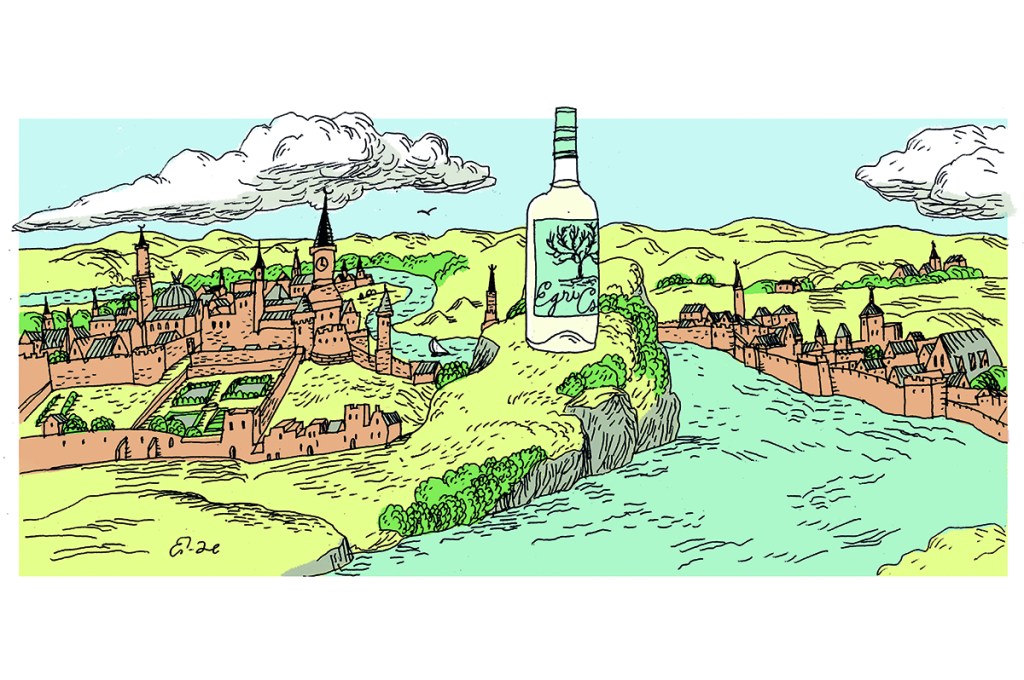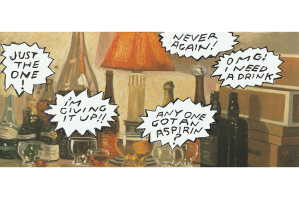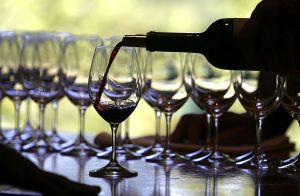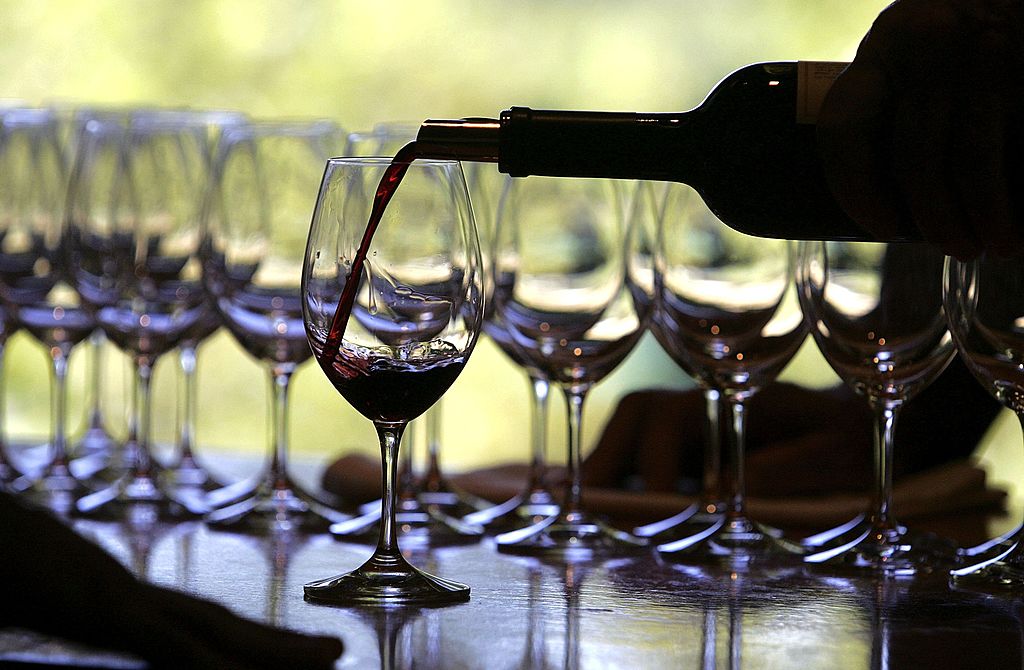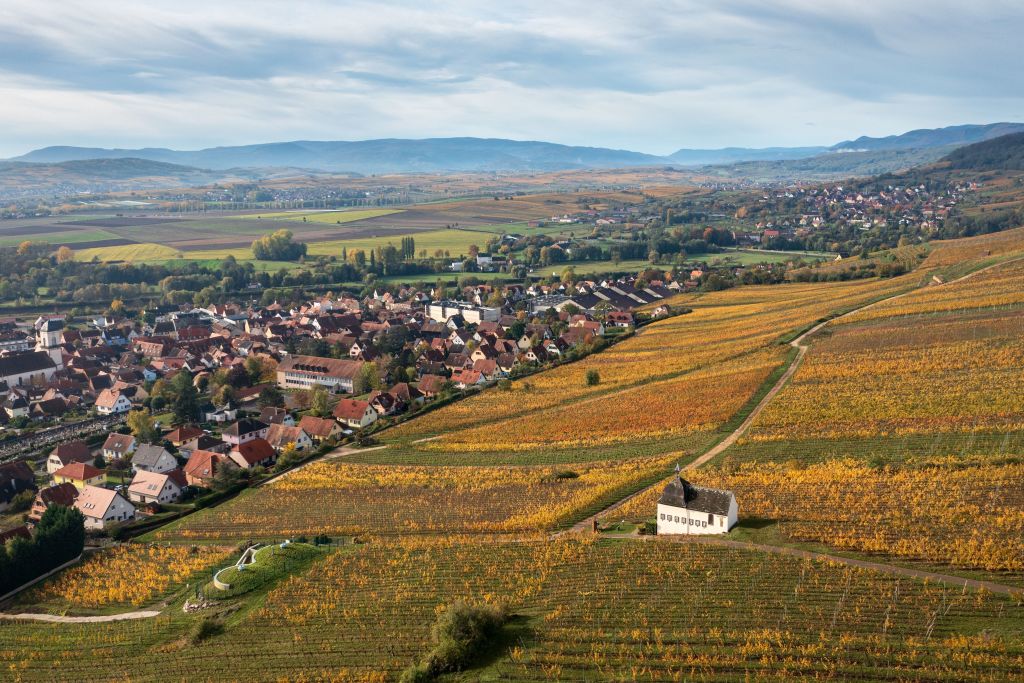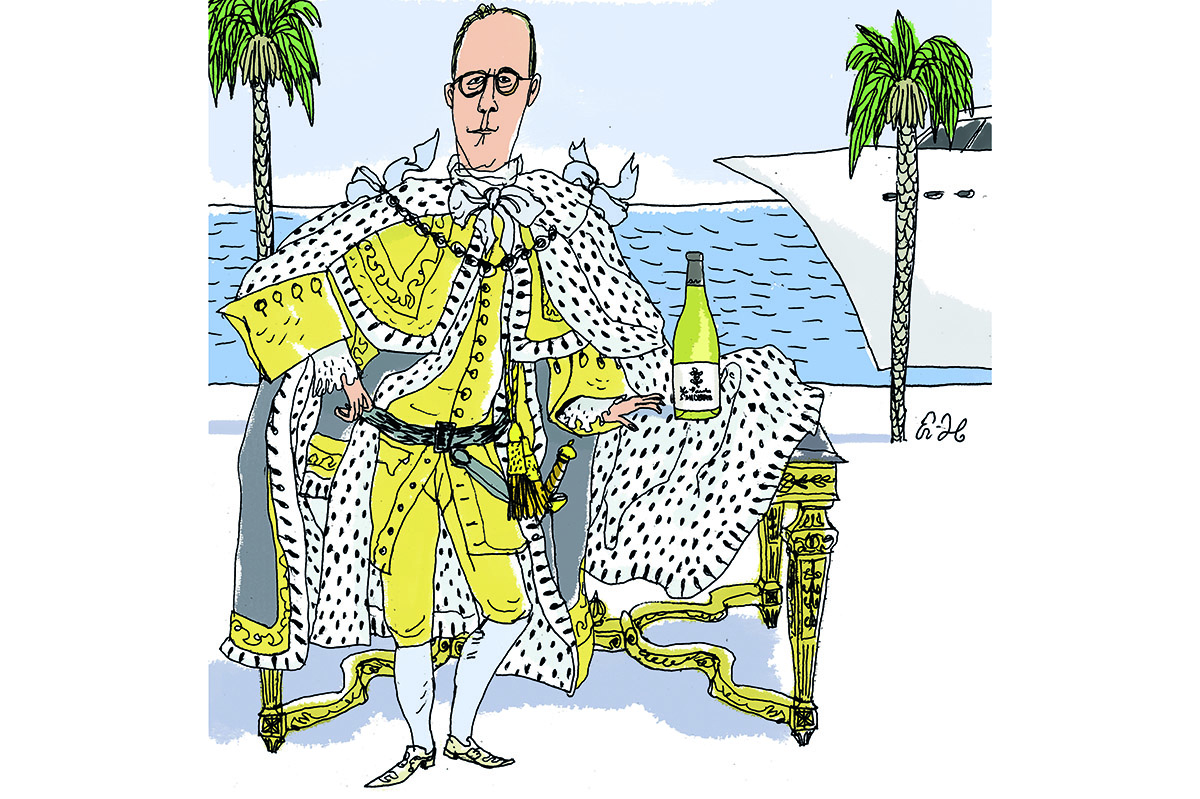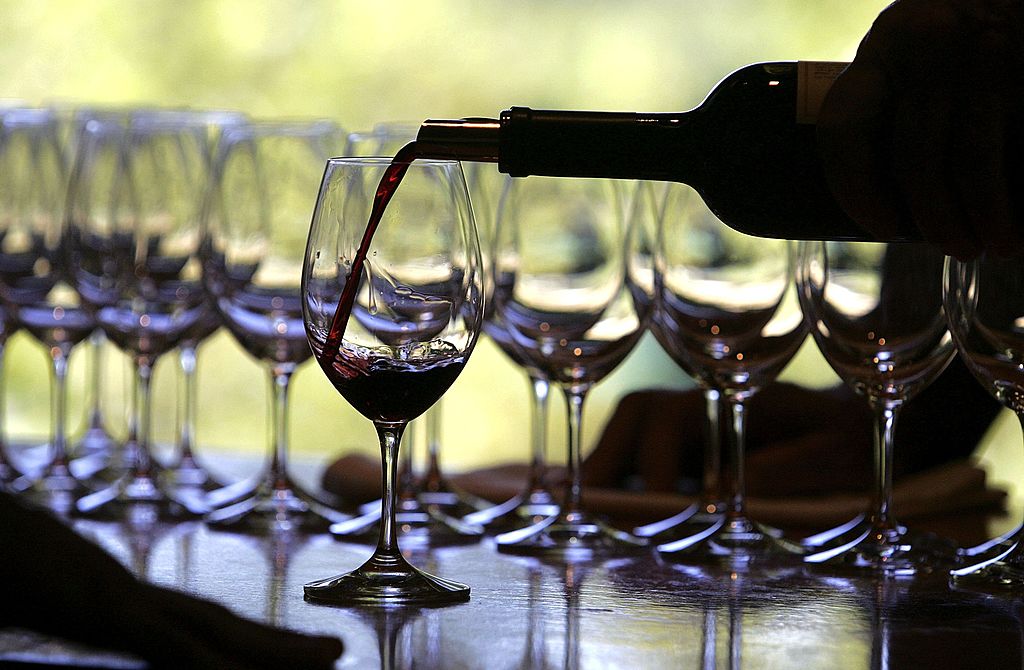The Ottomans were evicted from Budapest in 1686, but you can still find reminders of Turkish rule if you look in the right places. All these relics are on the Western, or Buda, side of the river, for Pest did not really exist in the seventeenth century. The original Turkish dome crowns the Rudas Baths, which are still in operation, public baths being one of the more salutary legacies of 145 years of Turkish occupation. Just north of the baths, on a slope leading up to the Buda Castle, an out-of-the-way cluster of graves is all that’s left of an old Muslim cemetery. From a distance, the weathered turban headstones look like pineapples.
Other legacies of the Turkish era remain outside of Budapest. In the southern city of Pécs, the Church of the Blessed Virgin Mary bears the unmistakable architectural hallmarks of its previous occupation as a mosque. And in the northeast, set against the backdrop of an old castle and the rolling hills of Hungarian wine country, a lonely minaret reaches skyward. The minaret, located in the picturesque Hungarian town of Eger, is the northernmost building of its kind in Europe. The story behind this solitary tower and the nearby castle, a stubborn holdout against the inexorable Ottoman advance, inspired the name of the region’s best-known export, a deep red wine known as Bikavér, or “Bull’s Blood.”
According to local legend, the garrison of the Eger castle fortified themselves with red wine during the bloody Ottoman siege of 1552. The Turks believed that the defenders’ stubborn resistance could only be explained by their mixing wine with the blood of bulls.
It’s a good story, but the part about mixing red wine and animal blood is a later invention. According to Ádám Juhász, co-owner of the Juhász Brothers Winery in Eger, it was the Turks who first introduced red-wine cultivation to the Eger countryside. Before the Turkish occupation (the castle eventually fell in 1596), only white wine was produced in the region.
The story of Bikavér — and, by extension, the Juhász family business — explains why Hungarian wine is often overlooked outside Eastern Europe. The Hungarians are great imbibers, with an unfussy drinking culture that extends from expensive wineries to the humble corner borozó, or wine bar. For centuries, the dessert wine tokay (from the Hungarian town of Tokaj) was famous throughout Europe. The Habsburg emperor Franz Joseph purportedly sent an annual birthday case to Queen Victoria with one bottle for every month she had lived.
Bikavér was first produced in the early twentieth century by mixing several different red wines into a deep, rich blend. The name capitalized on renewed Hungarian interest in the siege of Eger, prompted in part by the 1899 publication of Eclipse of the Crescent Moon, a melodramatic account of the castle garrison’s heroic defense against the Turks.
Though it quickly became a local favorite, Bikavér never achieved the global reach of French or Italian vintages. Two world wars and the imposition of communism effectively cut Hungarian wineries off from the outside world. According to Juhász, the biggest export markets for Bikavér are still places like Poland, Slovakia and the eastern part of Germany, a legacy of the communist era.
Things began to change in the 1990s, when Juhász’s father founded the family winery after losing his engineering job at a state-run company. Under communism, Eger wineries sacrificed quality for quantity, mass-producing cheap wines for Hungarian consumers and their fraternal socialist brothers behind the Iron Curtain. Bikavér, which is supposed to age for at least five years in oak barrels and requires a very selective wine harvest, fared poorly under this regime. In the 1990s and 2000s, however, family-owned operations began to restore the region’s winemaking reputation.
Eger wineries are still a small-scale affair. After climbing the minaret and exploring the battlements, visitors can walk over to the floridly named Valley of the Beautiful Women (don’t ask for the Hungarian appellation, which is difficult to pronounce even by local standards), where you sample local vintages while strolling from cellar to cellar. Although wineries like the Juhász Brothers now export to specialty shops in the United States and markets as far afield as China, most are family-owned businesses. The valley has a charming, ramshackle quality, complete with roving gypsy musicians and public firepits.
Since the end of communism, the spirit of inventiveness that produced the original Bikavér has also revived. In 2010, ten local cellars collaborated to produce Egri Csillag (“Star of Eger”), a white wine that has become the region’s most successful new vintage. Locals sometimes deride Egri Csillag as a touristy wine, but Juhász says it’s a good starting point for drinkers more accustomed to beers or cocktails. He recommends you begin by drinking rosés or whites before making your way up to more complex, layered reds like Bikavér.
Explaining their product to neophytes is one of the most difficult challenges facing twenty-first-century winemakers anywhere. When I spoke to him in December, Juhász had just finished making wine videos for social media. “I was on TikTok to make young people drink more wine,” he explained. “Wine consumption is mysterious and historical,” he continues, which makes it a hard sell to younger drinkers with short attention spans and a range of alcoholic alternatives, from craft beers to hard seltzers to cocktails.
Despite the introduction of Egri Csillag, Bikavér remains Eger’s signature export. Juhász says that the region produces between 9 and 10 million bottles each year. Every cellar, he adds, has its own house recipe.
Meanwhile, the wine’s “mysterious and historical” quality is still deeply linked to the town’s landscape and history. Although the story behind the wine may be apocryphal, the name “Bull’s Blood” aptly conveys its rich, complex flavors and deep red color.
Just as Eger was once a frontier outpost of the Ottoman Empire, it is also one of the northernmost regions for producing red wine. No one who has lived through an Eger winter would describe the climate as mild, but conditions are just warm enough for the cultivation of red grapes. Due to the colder climate, Bikavér is more acidic than other reds, which can be a turnoff for novices but rewarding for seasoned drinkers.
The Turks and the Soviets are long gone, but the siege of Eger and the wine it inspired remain an integral part of Hungarian culture. Every August, the local theater troupe performs Eclipse of the Crescent Moon in the Eger castle courtyard, complete with marauding Turks wielding scimitars and fireworks in place of late-medieval artillery. Hungarian right-wingers have bombastically compared Viktor Orbán’s anti-immigration policies, which often put him at odds with the rest of the EU, to the Eger garrison’s heroic last stand. The Ukrainian ambassador in Budapest referred to the siege early last year when appealing for Hungarian aid against Russia.
For nearly a century, Eastern Europe’s turbulent politics deprived outsiders of Eger’s unique winemaking culture. Now Juhász and his fellow winemakers have to contend with hard seltzers, mocktails and TikTok. But for the moment, the legend of Bikavér lives on in wine cellars and bars across Hungary. If you ever find yourself in Eger, the Valley of the Beautiful Women beckons.
This article was originally published in The Spectator’s February 2023 World edition.



